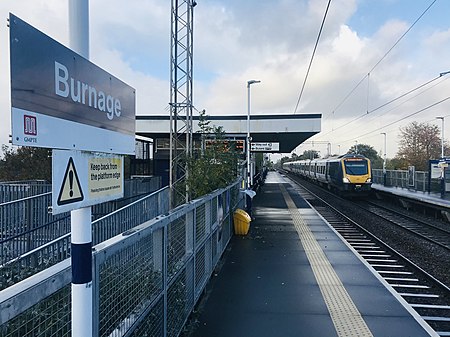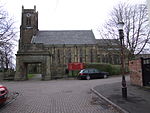Burnage railway station

Burnage railway station is a railway station in south Manchester, England, in the suburb of Burnage on the Styal Line. The station is served by Manchester – Crewe Northern Trains stopping services to Manchester Airport. It caters mainly for commuter traffic, being electrified at 25 kV AC overhead, and is used by EMU traffic. The station sits on the Styal Line to Manchester Airport, one of the congested lines on the national rail network. Historically it has been served by a half-hourly service to Manchester Airport/Crewe and Manchester Piccadilly. Since May 2018 services operate on a 'skip-stop' basis at irregular intervals to increase capacity on the line. As a designated Northern Connect stop, a direct express service to Blackpool North via Chorley was introduced as part of this timetable change. This was replaced by calls on services between Windermere/Barrow-in-Furness and Manchester Airport running via Wigan North Western as part of the December 2019 timetable change.
Excerpt from the Wikipedia article Burnage railway station (License: CC BY-SA 3.0, Authors, Images).Burnage railway station
Brayside Road, Manchester Burnage
Geographical coordinates (GPS) Address External links Nearby Places Show on map
Geographical coordinates (GPS)
| Latitude | Longitude |
|---|---|
| N 53.421944444444 ° | E -2.2152777777778 ° |
Address
Burnage
Brayside Road
M20 6ER Manchester, Burnage
England, United Kingdom
Open on Google Maps









